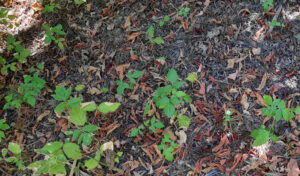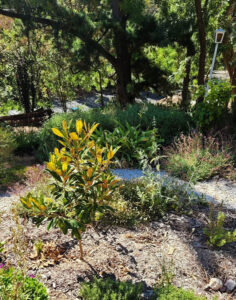Jumping the garden fence: when wonders become weeds
By Dan Austin
Whether it is through an ability to adapt to a wide range of environments, ingenious methods of seed dispersal or multiple methods for reproduction, in nature, plants are constantly vying to outcompete surrounding flora. When successful, these plants become champions for their species, but for humans, they achieve a different title – weeds.
Around 30,000 plant species have been introduced to Australia over the last few hundred years. Far from the plants, insects, and animals that may have kept them under control in their natural habitats, it is no wonder many have become weeds. While some of the several-thousand species of plants considered weeds in Australia have arrived accidentally, it might be surprising to know that around two-thirds are actually garden escapes.

These are those so common you can’t escape them, like soursobs (Oxalis pes-caprae) which, once upon a time, could be found within the pages of bulb catalogues as an exotic curio from far-off South Africa. The purple flowers of Salvation Jane or Patterson’s curse (Echium plantagineum) that blanket hillsides on country drives were brought in with the best of gardening intentions by a now ill-reputed Jane Patterson in the 1840’s. By 1985 the weed was covering millions of hectares in Australia, and though a biological control agent (Meligethes planiusculus) was introduced in the late 1990s, the weed continues to cost the meat and wool industries millions of dollars each year.

Though pretty and available for sale until the early 2000s, the appealing appearance of lantana (Lantana camara) doesn’t excuse the five million hectares of coastal and hinterland areas of Australia the plant now occupies. Any article discussing garden escapes would be incomplete without mentioning blackberries (Rubus spp.). Blackberries were widely introduced by settlers in the 1840s and 50s but their accelerated progression to a serious weed is often attributed to Baron von Mueller; a government botanist and first director of the Melbourne Botanic Gardens. von Mueller was reported to distribute blackberry seeds throughout the Australian bush on his travels with the idea of creating a regular source of fruit for settlers. He also recommended that blackberries be planted to control soil erosion along creek banks. Though he has an extraordinary history of contributions to Australian horticulture, these particular choices were not von Meuller’s best and blackberries now cover around nine million hectares around Australia.

It would be easy to assume when looking at these glaring examples of garden escapes and their associated spread, that we have learnt from our mistakes, and these are errors of the distant past. Unfortunately, this isn’t the case and many species still prized and sold in nurseries around Australia are continuing to quietly escape our gardens. Box elder (Acer negundo), honey locust (Gleditsia triacanthos) and strawberry trees (Arbutus unedo) are beautiful trees, no doubt, but they are now known to seed prolifically. It will upset some people to know that even favourites like agapanthus (Agapanthus praecox ssp. orientalis), some butterfly bushes Buddleia spp. and even golden bells (Tecoma stans) can be weedy in parts of Australia.
So, how can you tell if what you are buying, or already have, is a weed? Serious weeds shouldn’t be available for sale, although, you may find them already in existence on properties. Many such weeds have legislation attached to them regarding their movement and control and can be found on individual state’s declared weed lists and on the Australian Weeds of National Significance (WONs) list. Potential weeds are harder to identify, particularly as they vary by state. What is a weed in Queensland is not necessarily a weed in South Australia.
This is where Grow Me Instead (GMI), an initiative of the Nursery & Garden Industry Australia (NGIA) can become your greatest ally. The Grow Me Instead database (https://www.growmeinstead.com.au/) allows users to search the plants they are considering, state by state, and if the species is considered to have weedy potential, they are supplied with a range of non-invasive alternatives with similar characteristics.
When you think about the costs involved in removing an unwanted tree or ongoing woody weed control, the GMI database is simple to use, and a quick search today could save you thousands in the years ahead.
Dan Austin
IPPS Member, Author,
Lecturer, TAFE South Australia
M: 049 122 8591
E: daniel.austin@outlook.com
Main photo: Prolific and viable fruit set of box elder (Acer negundo)

